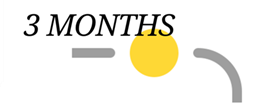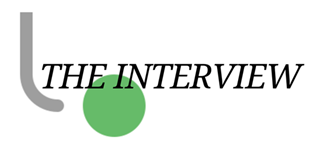How to Prepare for Postdoc Applications and Interviews

Being a postdoc is an exciting career step, where you get to act as a researcher, but also sometimes a teacher, mentor, lab manager, project coordinator, shoulder-to-cry-on, and about every other role under the sun! But how do you prepare for this kind of role? And then, how do you show someone hiring that you are the best candidate given only a few pages and an hour long interview?
We have collected advice from our peers on the things that helped us prepare when applying for postdocs, with a suggested timeline on when you can take each step. While this may seem daunting, you are likely already following many of these suggestions!
6+ months before applying

As soon as possible, think about making yourself the best candidate you can be. How you do this will depend on what kind of project you are looking for, but common things will include submitting your PhD thesis, or finalizing any changes you may need to make after a defence or viva. While many people don’t believe in ‘publish or perish’, having a paper is one way to boost your resume/curriculum vitae (CV). Although you can’t speed up the peer review process, you can ask co-authors about putting ready to submit (or already submitted) papers on a preprint server.
Writing up your research is just one part of being a good candidate for a postdoc. You can also ask in your current role about getting mentoring experience, maybe helping supervise an undergraduate thesis project, or a summer intern. You can engage in outreach activities, volunteer to help organize local conferences and workshops, present your research at conferences (like PlantBiology 2025, or another upcoming event) – essentially saying “yes!” to as many opportunities as possible to help you enrich your resume and become a better postdoc.
At this point, your network is really helpful. Your connections might hear about job opportunities, or could recommend ways to build your skillset to become a more desirable candidate. This is also a good time to think about who would provide good references for your postdoc applications – they can make all the difference! If you don’t feel that you have a strong network, this is the perfect time to start building one. Many people like to maintain these connections (especially with people you may not see very often, like those you meet at conferences) through networking sites like LinkedIn, BlueSky Social, and the Plantae Community network. Remember to keep your profiles up to date with current details and achievements so that anyone who might be hiring soon will see you at your best!
3+ months before applying

Keeping an up to date resume is crucial, especially if you are creating one for the first time. There is a great Plantae guide to creating your resume and CV here. Remember to add everything you have been doing (outreach, teaching, publishing) and especially things that demonstrate how you’ve used your skills (presenting at conferences, awards, travel grants).
Now is the time to ask your network, particularly those who have contacts in the research area you are most interested in, to keep an eye out for any job postings you might be interested in. Regularly check places where you expect to see these opportunities advertised too, like LinkedIn, BlueSky, and the institute vacancy portals. Jobs also get advertised in the Plantae jobs centre, Nature Jobs, and FindAPostdoc. Don’t get discouraged if you don’t find something in the first few weeks, just keep checking regularly to find new opportunities.
Doing the application

Now that you’ve found the postdoc you want to apply for, the most helpful information is contained within the job advert itself. Most will list both the essential and desirable skills, and a summary of the project goals. It will also tell you who is hiring, what university/research institute they are based at, and with that you can tailor your application to the job. You can tailor your application using these details – for example, if the project will require a lot of microscopy, don’t just say you have microscopy experience, but list the different imaging techniques you have used, different sample types, etc. Don’t be discouraged if you aren’t already an expert in one technique listed in the job advert, showing you have a range of experience in that area should give confidence that you can learn a new skill in no time! Wherever possible, include tangible examples of your previous experience, like referencing publications that include your images.
Make sure to read any papers that are relevant to the project (sometimes they are referenced in the advert, sometimes you need to find them yourself), a few of the recent publications from the lab you will be joining, and some of the recent impactful advancements in the research area. This will give you a good idea of the methods you might be using, the current standards, knowledge gaps, and exciting results to build on. This will help you further tailor your application, and give you background knowledge to discuss in the interview.
Most applications will be through job portals. Each one is always slightly different, so invest time into carefully reading the application requirements, pay attention to deadlines, and ask a friend to proof-read (and even give opinions on the content) before submitting. Sometimes a form will replace the need for your resume/CV, but you can always use that as a guide for what to write.
Doing the interview

There are many resources on interview skills, including TED talks, Plantae blogs for academia and industry, and Nature articles. Here is a summary of the tips we’ve found most relevant to postdoc roles, and a summary of what you might expect based on our experiences.
Speak clearly! Make sure you take your time when answering questions so that everyone on the panel can understand your points. You should also prepare a few questions in advance that are relevant to the project and/or environment. Usually there will be a chance at the end of the interview to ask questions – use this opportunity to make sure you will be joining a team with goals that align to yours.
Many institutes are conducting all interviews online to keep the process as equal as possible across all candidates. While time zones often don’t align nicely for interviews, be sure the hiring team is aware of time differences and what time would work best for you. This will allow you to perform at your best (I know there’s not enough coffee in the world for me to land a job at 4am)!
What’s next?

Anxiety about interview outcomes is very common, and so it’s natural to want to hear about the outcome ASAP. However, the hiring team often needs to take several administrative steps before informing candidates of any outcomes. Remember, they may also be travelling for work, taking annual leave, or just having urgent jobs land on their desk that prevents them from informing candidates about the interview outcome – don’t assume a delay is bad news! It’s often recommended to write a thank you email to the interviewer within a day or two of meeting them. Ensure that you don’t ask further questions or require a response, as they may not be able to reply until the aforementioned admin tasks are completed.
Many groups will invite their top choices for candidates to meet lab members virtually, or visit the institute (if feasible). Everyone wants to make sure new joiners will be compatible with the rest of the team – nobody wants to share a bench with someone they don’t get along with! If you are offered the job, you can also ask to privately meet with current or past lab members to find out about the lab culture, management styles, etc. At this point, it’s crucial to remember that you are a valuable researcher, and you deserve to find a manager, team, and project that lets you grow as a scientist.
Finally, every job, candidate, and interviewer will have different preferences and requirements. So remember to trust your gut, find advice from as many sources as possible, and stay positive – you can do this!
______________________________________________
About the Authors
Ciara O’Brien
Ciara is a postdoctoral researcher in the John Innes Centre (UK) and a 2025 Plantae Fellows. SOriginally from Ireland, Ciara moved to the UK to study postharvest ripening at Cranfield University for their PhD, where they fell in love with science communication- from teaching to outreach! You can find her on X: @ciaraobrien333.
Stephanie Temnyk
Stephanie is part of Corteva Agriscience’s PCR and Marker Technologies team, and a 2025 Plantae Fellows. Stephanie’s research background involved characterizing chloroplast-targeted genes; in fact, these were originally implicated in peptidoglycan production of the cyanobacterial plastid ancestor. Her interests always drew her to the genetic crop improvement space. You can find her on X: @STemnyk.




